After Seven Decades, Toyota’s Legendary Land Cruiser Keeps Rolling Along
#1
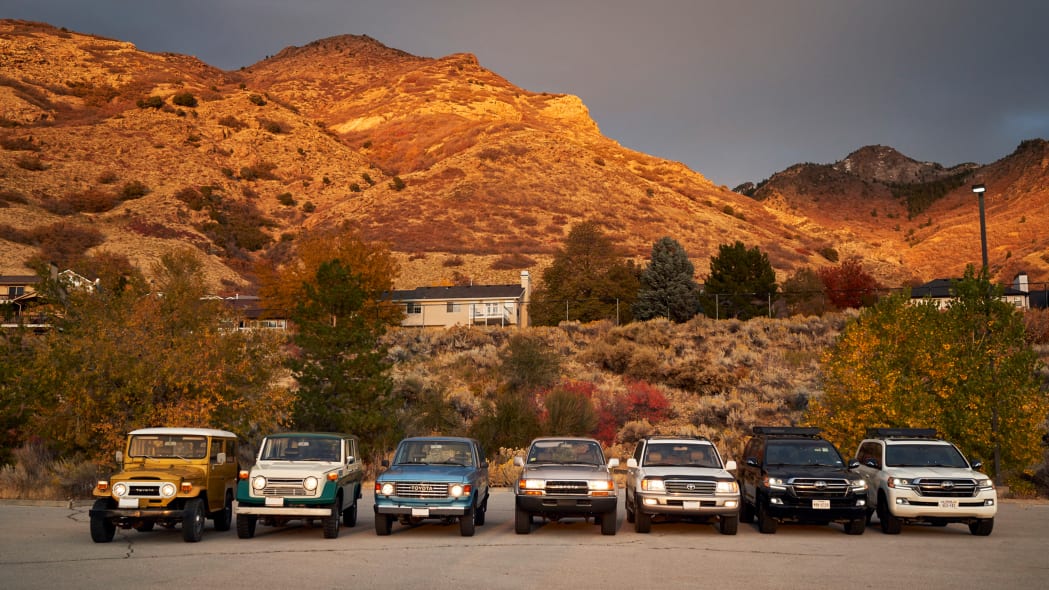
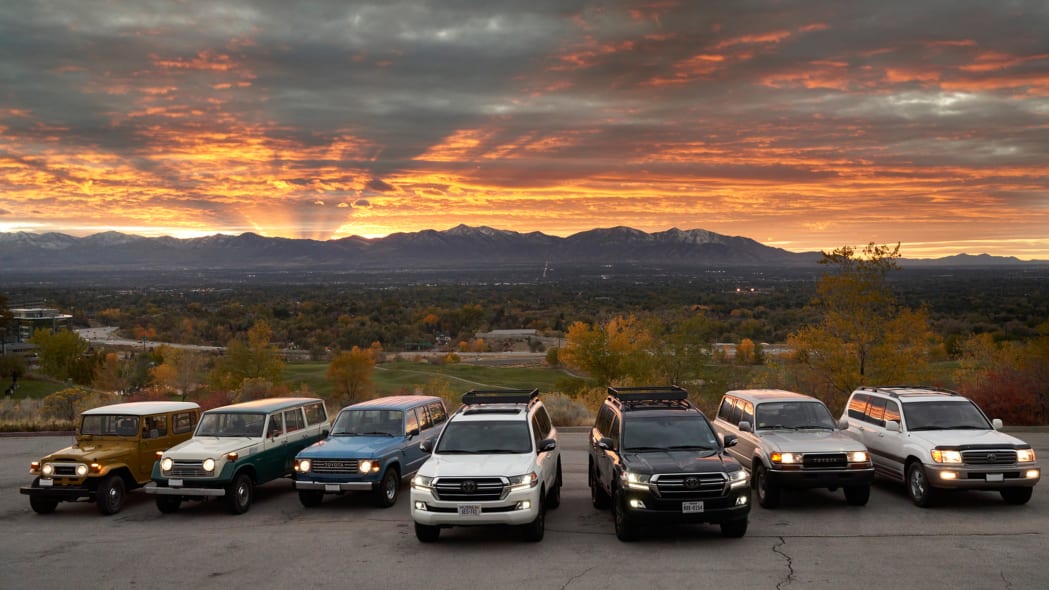
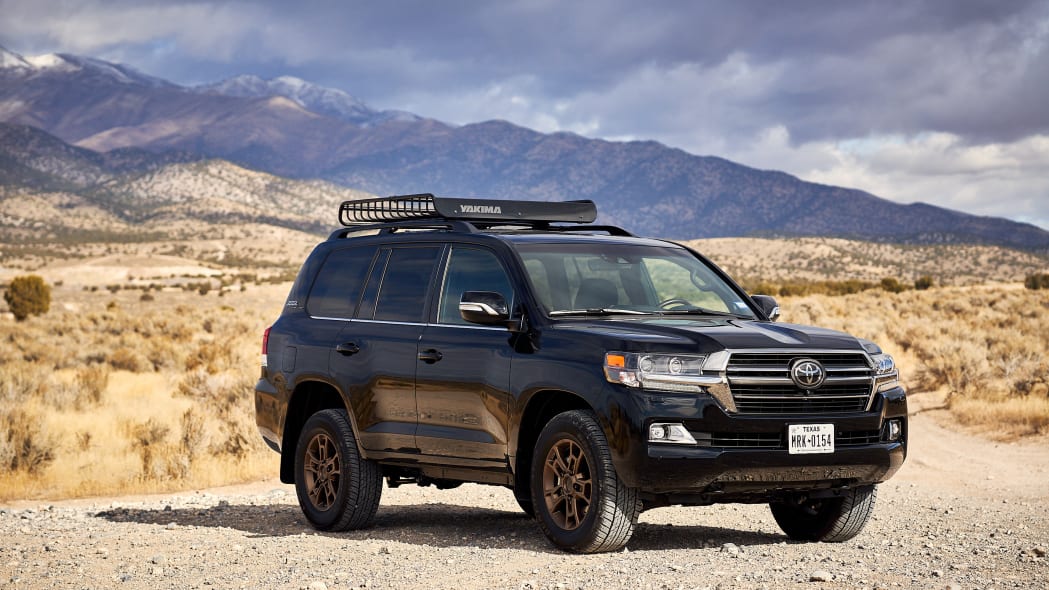
2019 URJ200 Land Cruiser
I drove these Cruisers in reverse chronological order, so here is where we start. The 200 Series is the current U.S.-market Land Cruiser since 2008. Under the hood is a naturally aspirated 5.7-liter fuel injected V8 that makes 381 horsepower and 401 pound-feet of torque. Compared to every other version, it's the most luxurious. It is also the heaviest, at over 5,800 pounds.The 200 Series has everything you’d need in a luxury SUV: heated seats and steering wheel, power everything, USB ports, high-end sound system, leather, responsive infotainment system, and most of all, a quiet, comfortable ride. It floats over bumps with ease, the eight-speed transmission shifts unnoticeably. The steering is a bit light, and the 200 Series feels big on the road, because it is. If you take this vehicle off-road, make sure it’s not down narrow forestry trails, unless you don’t mind pinstripes.
The off-road course where we drove this was a bit more aggressive than the one the museum vehicles tackled, but the Rubicon Trail it was not. The 200 Series tackled loose rock with ease, though a handful of times the running boards (something the Heritage Edition does away with) scraped.
Most owners will never take the 200 Series off-road, but this is a Land Cruiser in every sense, and there’s a reason it won the Dakar Rally's production car category. It’s a true off-road vehicle.
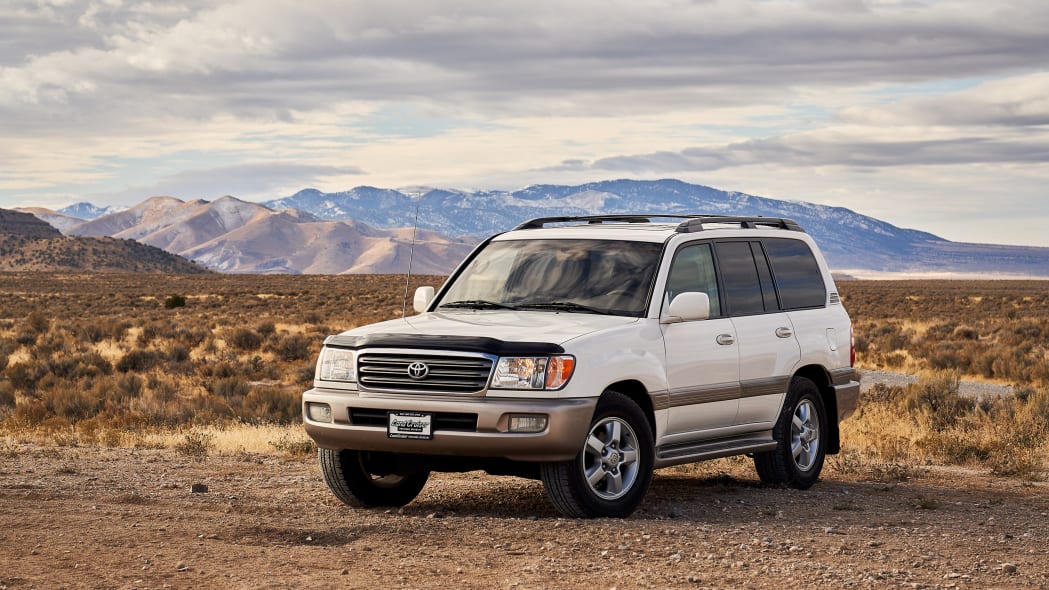
2004 UZJ100 Land Cruiser
Of all the vehicles at this event, the 100 Series is the one I know best. It's first in line to be my next vehicle purchase, and I have driven a handful of 100 Series Cruisers and its LX470 cousin. This was a near-perfect example, one I would gladly fork over money for, and the only other Cruiser at the event that had a trustworthy odometer, which read just north of 140,000 miles.The 100 Series was offered in the United States from 1998-2007, though it did not remain unchanged in that time. The 1998 model was the first Land Cruiser to come with a V8 and the first with an independent front suspension. The 1999 model introduced traction control, 2003 came with a new five-speed transmission, and in 2006 the Land Cruiser got a bump from 235 to 275 horsepower.
This SUV was nearly 15 years old but didn’t feel it, provided you didn’t need to use the navigation system. The leather seats were more broken-in than worn, and everything from the heated seats to the power-adjustable steering wheel worked. It even smelled new-ish.
On the road it handled better than any 100 Series I’ve driven. The steering was comparable to the 200 Series, light but connected. The dirt road that served as an off-road course was easily driven over, and at 7,700 feet of elevation, the 4.7L V8 still had plenty of power to move what is quite a large SUV.
Looks-wise, the 100 Series is one of my favorites. The white and gold colorway isn’t my first choice (as I write this, there is a purple Cruiser parked nearby that is calling to me). But it’s definitely one I’d be happy with.
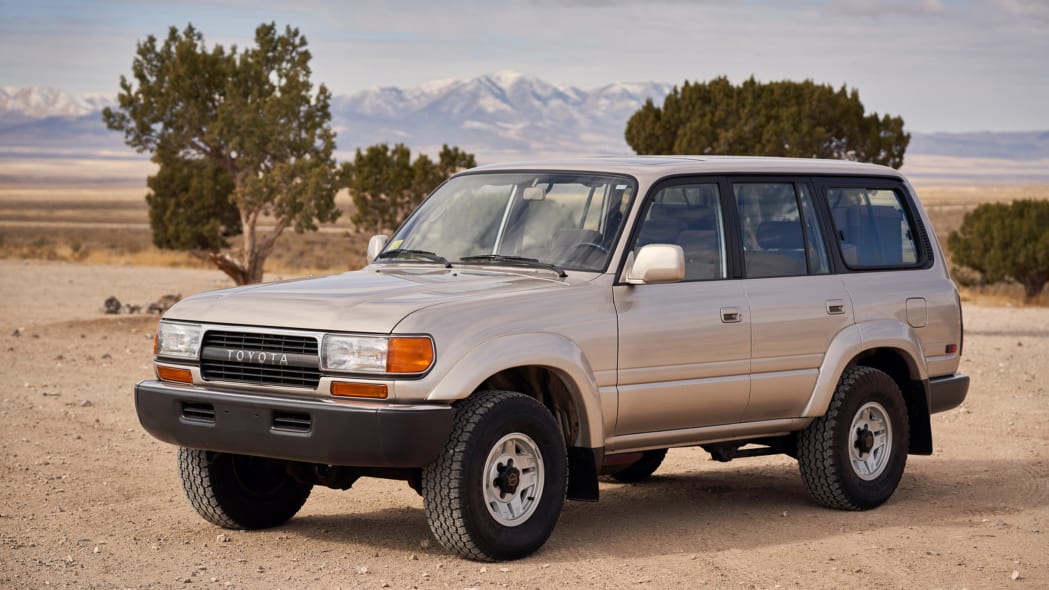
1991 FJ80 Land Cruiser
Until now, the oldest Toyota I had driven is Senior Editor Alex Kierstein’s 1997 Tacoma. As I opened the door of this 1991 80 Series, I was hit with a smell and texture that immediately reminded me of that truck. But first, let’s discuss looks. I have a hard time ranking which Land Cruiser looks best. To me everything ranks behind the FJ40 and ahead of the FJ55, but the 80 Series is a good one. This example had the misfortune of gold-beige paint, but everything else — the squared-off headlights, the “Toyota” script in the grille, the “Land Cruiser” mud flaps, and the 4WD badging on the rear — was perfect.The interior was a mix of beige fabric and brown-and-black plastic. The steering wheel was thinner, though not as wispy as some of its predecessors. It was beautifully simple too, with the words “Land Cruiser” featured in the middle above a white horn symbol. The seat reminded me of my grandfather’s recliner, a comfortable, broken-in but well-built piece of furniture. And the smell I mentioned above was similar to the pages of an old book. The brown floor mats looked hardly ever used.
The 80 Series was the last Land Cruiser in the United States (1990-1997) with a six-cylinder engine, this one a 4.0-liter inline with 155 horsepower and 220 lb-ft of torque. It was also the last automatic I would drive in this trip back through time.
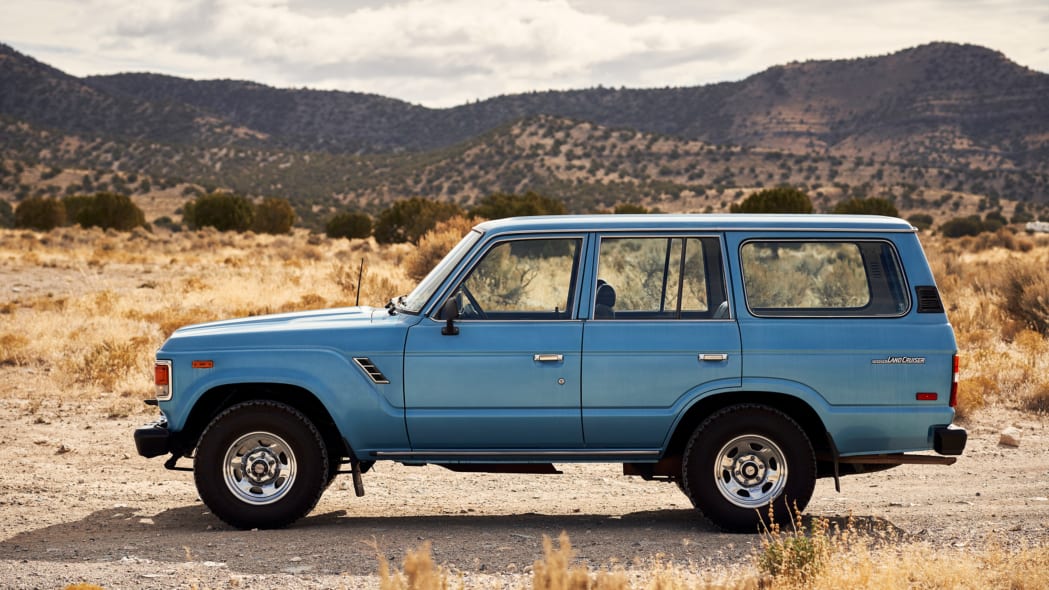
1984 FJ60 Land Cruiser
The FJ60 (1980-1990 in the United States) was a sight to behold. This is the era you see bouncing around Boulder, Colorado, rusted almost beyond recognition. Yet this museum piece looked like it had been made last year. With the circular headlights for which the Land Cruiser is known, it stood out alongside the FJ40 as the best-looking, and the one I was most excited to drive. The light blue exterior and blue striped interior screamed 1980s, and the old-school “Land Cruiser” script was everywhere — the steering wheel, exterior, mud flaps, license plate frame, I couldn’t get enough. Though it looked mint, this was the first Cruiser that felt its age. The steering felt a bit loose, even when parked. I pressed the clutch and turned the ignition, and the inline six came to life. Didn’t roar, didn’t fire up, just started.The clutch was easy to use, easier than I anticipated. At 135 horsepower brand new and at sea level, the 60 Series was underpowered. At 35 years old and 7,700 feet of elevation, the real-world horsepower might've been in double digits. As the FJ60 slowly climbed the damp mountain road, my excitement waned. The steering was as vague as steering can get, and the truck struggled to pull its own weight and that of its two passengers, vibrating and making sounds that raised eyebrows.
In the end, the 60 Series made it to the top of the mountain road, where it made for some fantastic photos, but not the driving experience I was hoping for.
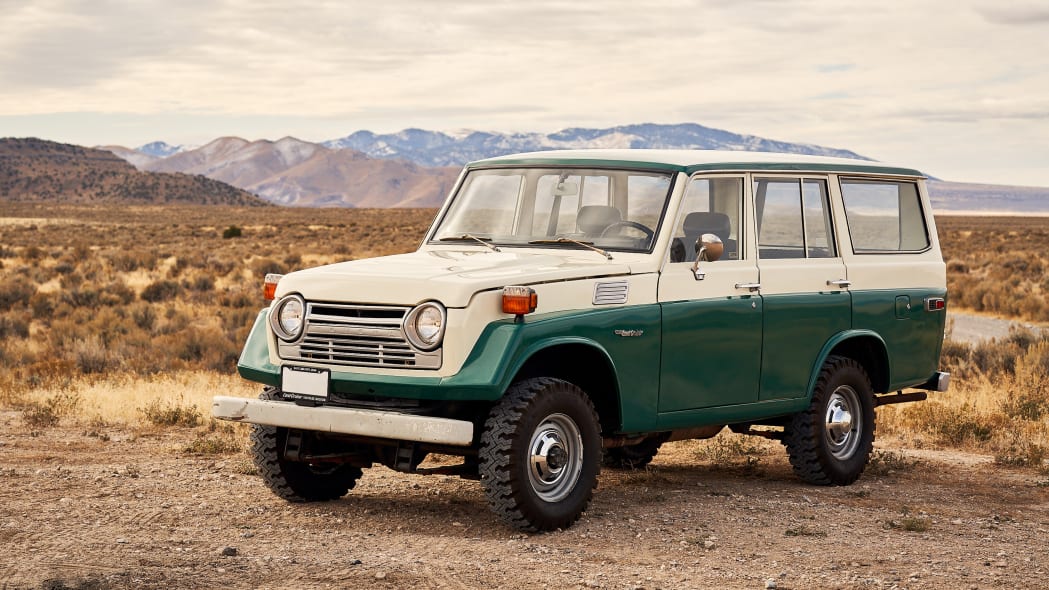
1977 FJ55 Land Cruiser
The FJ55 is undoubtedly the worst looking Land Cruiser ever made, nicknamed the “Iron Pig.” Even the awesome green and white paint job isn’t enough to overcome whatever it is you’d call that grille. The two-tone theme continues inside. Covering the front bench is impeccably maintained black leather, with black floor, steering wheel, dashboard and lower door panels. The rest of the doors and the headliner are white.As my driving partner finished his go at the dirt road and I slid over to the driver’s side, a grin grew on my face. I love bench seats. The shifter was missing any kind of pattern, so I took my best guess at first gear, and we headed off. Maybe it was because the FJ55 is lighter than the FJ60, or because it was in better condition, but I much preferred the 55 to the 60. Available 1968-1979 in the United States, the FJ55 shared the same 135 horsepower engine as the 40 and 60. The FJ55 was not fast, but it was enough. The steering wheel felt much more accurate, and the leather wrapping reminded me of old golf clubs.
It bounced along the trail with the ease and comfort of the 80 series. The smell of exhaust never quite left the cabin, as the rear window was stuck open with a 2-inch gap at the top. Such is life with a 42-year-old truck.

1977 FJ40 Land Cruiser
Finally, the moment I'd been waiting for since that day in Jackson Hole. It was time to drive the FJ40. But as I looked in the rearview mirror, one of the resort SUVs was right behind me, unwilling to drive around. Momentarily flustered, I quickly released the clutch. The FJ40 shuddered and stalled. Not exactly how I’d imagined my first moments behind the wheel of a 40 Series.I composed myself, turned the ignition and, this time, quickly sped off. The 40 Series is quite a bit lighter than the FJ55 or FJ60, so it feels peppy. I wouldn’t say it's quick or fast, but it chugs along at a pace that doesn’t disappoint. Up front there are two bucket seats in black leather. The seatbelt clips feature old-school Toyota script, the same found in the FJ55 of the same year.
On the exterior, the sideview mirrors seem like an afterthought, unpainted and bolted onto each door. A spare tire is attached to the rear door. That door’s handle required a clockwise turn to open. At some point I’m sure this task was smooth, but 42 years had been rough on this handle, and it took a bit of effort. Inside the rear were two facing jump seats. Aside from the driver’s seat, this was the place to be.
The FJ40 was loud, bumpy, and slightly uncomfortable.
Everything I hoped it would be.
#2
Lexus Fanatic
Land Cruiser is the longest owned Toyota by the first owner. 11 years I read a while back. Very high satisfaction rates for these models.
Happy they made a 2-row option available. Sad no Apple Car Play. Stealth Luxury for sure, 4 ZONE and 28 air vents
One thing I find interesting is that Toyota has done TRD for every single body on frame model they have, but not Land Cruiser.
Happy they made a 2-row option available. Sad no Apple Car Play. Stealth Luxury for sure, 4 ZONE and 28 air vents

One thing I find interesting is that Toyota has done TRD for every single body on frame model they have, but not Land Cruiser.
Last edited by Toys4RJill; 11-11-19 at 02:56 PM.
#3
Lexus Fanatic
One thing I find interesting is that Toyota has done TRD for every single body on frame model they have, but not Land Cruiser.
#4
Lexus Fanatic
A TRD Pro 4Runner will walk all over a new modern 2020 US spec Land Cruiser off the beaten path.
Last edited by Toys4RJill; 11-11-19 at 04:04 PM.
#5
Lexus Fanatic
You dont see them using 4Runners in the same Third-World jungle/desert/mountain conditions as you do with the LC, do you? Like it or not, the LC is, in some ways, in a class by itself.....offering Range-Rover comfort and sure-footedness off-road along with much better reliability.
#6
Lexus Fanatic
After Seven Decades, Toyota’s Legendary Land Cruiser Keeps Rolling Along
PLANO, Texas (November 14, 2019) – Can a vehicle really be in a class of one? In America in 1958, the Toyota Land Cruiser was. That’s because Toyota sold just a single Land Cruiser in the United States in its first year here. Just one. But then, legends sometimes get off to a slow start.
That legend had global impact, as reflected in Toyota selling its 10 millionth Land Cruiser in summer 2019 in Australia, Land Cruiser’s largest market. (The total includes some Land Cruiser models that were not imported to the U.S.)
As one of today’s most luxurious full-capability SUVs, the 2020 Land Cruiser might seem to have little in common with the bare-bones Land Cruiser models built through the late 1970s. Yet, Land Cruisers new and classic are connected through the decades by world-renowned capability, an adventurous streak, and the shared Toyota core values of quality, dependability and reliability.
For 2020, a limited-availability Land Cruiser Heritage Edition honors this vehicle’s constant presence in Toyota’s U.S. lineup since 1958. The choice of Midnight Black Metallic or Blizzard Pearl exterior color, plus bronze-colored BBS® forged aluminum wheels, heritage badges and other exclusive exterior design and interior appointments, commemorate this milestone in a characteristically understated way.
The Beginning: 75 Horsepower and Climbing Mt. Fuji
Land Cruiser heritage stretches back to 1950 and a vehicle originally developed for military use. Japan’s National Police Reserve Forces had called for a rugged, locally built all-terrain four-wheel drive vehicle, and Toyota demonstrated a highly capable little truck known as the Toyota BJ. Its 3.4-liter inline six-cylinder engine made 75 horsepower with plenty of low-speed torque, just what such a vehicle needed.
The Toyota BJ proved its mettle in July 1951, when Toyota test driver Ichiro Taira drove one up the trail on Japan’s 12,388-foot-high Mt. Fuji, making it to the sixth checkpoint (there were, and still are, 10 checkpoints). That was further up the mountain than any motor vehicle had ever gone before. Although the National Police Reserve Forces passed on Toyota’s plucky BJ, Japan’s National Police Agency ordered a fleet, as did government forestry and utility agencies.
In 1954, Toyota gave the BJ a new name: Land Cruiser was suggested by Toyota Director of Technology Hanji Umehara, who observed that the vehicle seemed to easily cruise over the roughest terrain.
Land Cruiser 20 Series
For 1955, Toyota introduced the Land Cruiser 20 Series, now with a more powerful 3.9-liter inline-six. It was still a Spartan machine, but with some suspension changes to improve the ride. Toyota’s all-terrain workhorse found early markets in South America and the Middle East, and an upgraded model in 1955 had doors and a metal top.
Toyota added more body styles for the 20 Series, including a pickup truck, station wagon, and a cab/chassis fire truck version. The Land Cruiser became the basis of Toyota’s export strategy, using the vehicle to establish a reputation of toughness.
On October 31, 1957, Toyota Motor Sales, U.S.A., Inc. opened in a former Rambler dealership in Hollywood, California. Vehicle sales began in 1958, with the aforementioned single Land Cruiser, along with 287 Toyopet Crown sedans. It was a start.
Birth of a Legend: Land Cruiser FJ40
The Land Cruiser 20 Series continued for a few more years before a major change came in 1960. The 40 Series, a.k.a FJ40, looked evolutionary, but there was more to it than met the eye. The chassis with solid front and rear axles on leaf springs continued, as did the fold-down windshield. But angular styling, a flat, white roof, wraparound rear windows and short overhangs established a new look, soon to become iconic. Improved assembly processes raised quality and finish.
The inline-six produced 125 horsepower and 200 lb-ft of torque, more than other utility vehicles offered at the time. The FJ40 was the first Land Cruiser with a two-speed transfer case, which improved off-road capability and greatly contributed to the Land Cruiser legend. (The 20 Series had relied on a super-low 5.53:1 first-gear ratio for handling steep inclines.)
The FJ40 came to the U.S. in 1960 and was Toyota’s best-selling vehicle here through 1965, when the Corona passenger car arrived and took over that mantle.
 Featured image: 1977 Toyota Land Cruiser FJ40
Featured image: 1977 Toyota Land Cruiser FJ40
Family Matters
By the mid-1960s, many customers were seeking larger 4-wheel drive vehicles, for businesses such as ranching and surveying, as well as for sportsman and family outdoors activities. Toyota responded with the Land Cruiser 55 Series wagon model in 1967, built on a 16-inch longer wheelbase and featuring its own, modern styling and an improved version of the 3.9-liter inline-six. Toyota became the third-best-selling import brand in the United States that year.
As global demand for these mountain goats on wheels steadily increased, Toyota expanded Land Cruiser production to additional countries. Toyota built its 100,000th Land Cruiser model in 1968, and the 300,000th in 1973.
While Land Cruisers were not high-volume vehicles, an intensely loyal global following had made them icons of Toyota’s global family. There was no doubt that the Land Cruiser’s reputation for durability had positively impacted the Toyota passenger car line in all markets. This minimalist, trail-conquering machine had become a sort of brand halo vehicle.
Both the 40-series and 55-series Land Cruisers gained a new 4.2-liter inline-six in 1975, and a 4-speed transmission replaced the 3-speed. In 1979, the FJ40 retailed for about $6,000 in the U.S., and, with neither air conditioning nor power steering, was still a back-to-basics SUV. By then, however, it was clear that another evolutionary step was needed.
 Featured image: 1977 Toyota Land Cruiser 55 Series
Featured image: 1977 Toyota Land Cruiser 55 Series
One Era Ends, Another Begins
For 1980, Toyota replaced the Land Cruiser 55 Series with the all-new 60 Series (FJ60), which offered greater comfort while still retaining the rugged capability. The one millionth Land Cruiser was built that year.
Toyota ended FJ40 sales in the U.S. in 1983 and stopped building the landmark vehicle the following year. (A new model, the Land Cruiser 70 Series, replaced the FJ40 in many markets, though not in the U.S.) In 2007, Toyota introduced the FJ Cruiser, a rugged though comfortable SUV inspired by the FJ40’s design and built using some components from a Land Cruiser model called the Prado (J120). The FJ40, meanwhile, has today become a collectible vehicle, with some selling at major auctions for $50,000+.
 Featured image: 1984 Toyota Land Cruiser FJ60
Featured image: 1984 Toyota Land Cruiser FJ60
Land Cruiser Muscles Up
The Land Cruiser 60 Series evolved slowly through the 1980s, a decade that would see significant growth in the SUV market. The 1988 Land Cruiser was updated with a new dash and upgraded interior, and a new 155-horsepower 3F 4.0-liter engine replaced the old 4.2 liter. Rectangular headlamps immediately identify the 1988 model.
More evolution was needed, especially in the U.S. market, where the SUV market was rapidly expanding. Introduced in spring 1990 as a 1991 model, the Land Cruiser 80 Series represented a major leap forward for the vehicle. Coil springs for the front suspension improved ride quality, and for the first time in a Land Cruiser, a full-time 4-wheel drive system could be used in all conditions, including dry roads. A locking center differential ensured off-road capability, something many Land Cruiser owners used.
By 1991, leather-trim seats, air conditioning, upgraded audio and other amenities were pushing the Land Cruiser into luxury territory. Safety evolved, too, with airbags and ABS braking. For 1993, Toyota endowed the Land Cruiser with an all-new, 24-valve, DOHC 4.5-liter inline-six engine producing 212 horsepower and 275 pound-feet of torque, the added power making the Land Cruiser an even better tow vehicle than before.
 Featured image: 1991 Toyota Land Cruiser 80 Series
Featured image: 1991 Toyota Land Cruiser 80 Series
Despite its plusher appointments, the Land Cruiser 80 Series remained a highly capable trail warrior, now also equipped with front and rear locking differentials. The 80 Series also became the basis for the Lexus LX 450, the luxury brand’s first-ever SUV.
Toyota Land Cruiser 100 Series: Power and Luxury on the Rise
Land Cruiser evolved more quickly in the 1990s, becoming a versatile, rugged and comfortable everyday family vehicle for many customers. Then came a major leap: The Land Cruiser 100 Series introduced for 1998 was sleeker, but still with a shape defined by function. The new chassis was 50 percent stiffer, and the ride was more comfortable thanks to Land Cruiser’s first independent front suspension. For the first time, the Land Cruiser’s engine was not an inline six, but rather a 4.7-liter V8 with 230-horsepower. For 2006, output increased to 275 hp.
As plush as the Land Cruiser had become, it was as capable as ever, with steep approach and departure angles for trail driving, along with automatic height adjustment suspension. The V8 delivered 80 percent of its peak torque at just 1,100 rpm, burnishing Land Cruiser’s towing performance and off-road chops. This was a vehicle that could conquer the trail while coddling its passengers. The more luxurious Lexus version was the LX 470.
The somewhat smaller Land Cruiser Prado (J120), meanwhile, became the basis for the Lexus GX 470 SUV in 2003, and the basic chassis also underpinned the fourth generation Toyota 4Runner. This 120 Series evolved into the 150 Series, achieving its best-equipped and most luxurious form as the Lexus GX 460 with a 301-hp 4.6-liter V8.
 Featured image: 2004 Toyota Land Cruiser 100 Series
Featured image: 2004 Toyota Land Cruiser 100 Series
Toyota Land Cruiser 200 Series
If the 100 Series Land Cruiser had been blazing a trail to premium luxury, the 200 Series certainly reached that destination when introduced in 2008. The current-generation Land Cruiser created a benchmark for combining no-compromise capability with premium luxury.
The Land Cruiser’s brawny yet refined 381-horsepower 5.7-liter DOHC V8 engine produces 401 lb.-ft. of torque, channeled through an 8-speed Electronically Controlled Automatic Transmission with intelligence (ECT-i). The versatile full-time 4WD system uses a TORSEN limited-slip locking center differential and a 2-speed transfer case with selectable low-range.
The modern Land Cruiser’s roots show in its tough-as-nails body-on-frame construction. Its sophisticated chassis with Kinetic Dynamic Suspension System (KDSS) provides exceptional ride comfort, while a full array of advanced chassis technologies, including Downhill Assist Control, Hill Start Assist, CRAWL Control, and Off-Road Turn Assist, make Land Cruiser adept at handling difficult trails.
Beneath the polished, elegant exterior, the Land Cruiser is all business, with skid plates to help protect the front suspension, radiator, fuel tank, and transfer case. With its standard Trailer Towing Package, the Land Cruiser can pull a trailer up to 8,100 pounds.
Using the Multi-Terrain Select system, the driver can tailor the Land Cruiser’s wheel slip control to the surface and driving conditions. The Multi-Terrain Monitor provides nearly 360-degree visibility on tight trails, displaying potential obstacles on the 9-inch touchscreen.
 Featured image: 2020 Toyota Land Cruiser Heritage Edition
Featured image: 2020 Toyota Land Cruiser Heritage Edition
Roughing It Doesn’t Have to be Rough
No matter how difficult the road or trail gets, the 2020 Toyota Land Cruiser indulges its occupants in comfort. Among the premium luxury features are leather-trimmed seating for up to eight, ventilated front seats, heated steering wheel with power tilt and telescoping and memory, power moonroof, four-zone automatic climate control with 28 cabin air vents, a refrigerated compartment inside the center console, and much more.
Musically speaking, the Land Cruiser is lightyears beyond the AM/FM stereo offered in the 1980s FJ60 model. The 2020 Land Cruiser’s standard Toyota Premium Audio with JBL® and Integrated Navigation features 14 JBL speakers, split-screen capability, advanced voice recognition, Siri® Eyes Free mode, SiriusXM® Satellite Radio, Bluetooth® connectivity and music streaming, and Qi wireless phone charging with compatible phones.
All 2020 Land Cruiser models come standard with Toyota Safety Sense P (TSS-P), which includes Pre-Collision System with Pedestrian Detection, Lane Departure Alert with Sway Warning System, Automatic High Beams and High-Speed Dynamic Radar Cruise Control (DRCC). In addition, Blind Spot Monitor and Rear Cross Traffic Alert are also standard.
 Featured image: 2020 Toyota Land Cruiser
Featured image: 2020 Toyota Land Cruiser
Brand Cornerstone
In 2018, Toyota sold 318,000 Land Cruiser models worldwide (all versions included), with Australia the largest market. The U.S. takes a few thousand per year, and while that’s a huge leap over the single Land Cruiser sold here in 1958, Toyota’s flagship SUV remains a proud cornerstone on which the brand’s success was built.
https://pressroom.toyota.com/after-s...rolling-along/
- A Toyota Global Icon for Nearly 70 Years
- 10 Million Land Cruisers Sold … and Counting
- Today: A Leader in Luxury and Capability
- 2020 Heritage Edition Marks Continuous Presence in U.S. Since 1958
PLANO, Texas (November 14, 2019) – Can a vehicle really be in a class of one? In America in 1958, the Toyota Land Cruiser was. That’s because Toyota sold just a single Land Cruiser in the United States in its first year here. Just one. But then, legends sometimes get off to a slow start.
That legend had global impact, as reflected in Toyota selling its 10 millionth Land Cruiser in summer 2019 in Australia, Land Cruiser’s largest market. (The total includes some Land Cruiser models that were not imported to the U.S.)
As one of today’s most luxurious full-capability SUVs, the 2020 Land Cruiser might seem to have little in common with the bare-bones Land Cruiser models built through the late 1970s. Yet, Land Cruisers new and classic are connected through the decades by world-renowned capability, an adventurous streak, and the shared Toyota core values of quality, dependability and reliability.
For 2020, a limited-availability Land Cruiser Heritage Edition honors this vehicle’s constant presence in Toyota’s U.S. lineup since 1958. The choice of Midnight Black Metallic or Blizzard Pearl exterior color, plus bronze-colored BBS® forged aluminum wheels, heritage badges and other exclusive exterior design and interior appointments, commemorate this milestone in a characteristically understated way.
The Beginning: 75 Horsepower and Climbing Mt. Fuji
Land Cruiser heritage stretches back to 1950 and a vehicle originally developed for military use. Japan’s National Police Reserve Forces had called for a rugged, locally built all-terrain four-wheel drive vehicle, and Toyota demonstrated a highly capable little truck known as the Toyota BJ. Its 3.4-liter inline six-cylinder engine made 75 horsepower with plenty of low-speed torque, just what such a vehicle needed.
The Toyota BJ proved its mettle in July 1951, when Toyota test driver Ichiro Taira drove one up the trail on Japan’s 12,388-foot-high Mt. Fuji, making it to the sixth checkpoint (there were, and still are, 10 checkpoints). That was further up the mountain than any motor vehicle had ever gone before. Although the National Police Reserve Forces passed on Toyota’s plucky BJ, Japan’s National Police Agency ordered a fleet, as did government forestry and utility agencies.
In 1954, Toyota gave the BJ a new name: Land Cruiser was suggested by Toyota Director of Technology Hanji Umehara, who observed that the vehicle seemed to easily cruise over the roughest terrain.
Land Cruiser 20 Series
For 1955, Toyota introduced the Land Cruiser 20 Series, now with a more powerful 3.9-liter inline-six. It was still a Spartan machine, but with some suspension changes to improve the ride. Toyota’s all-terrain workhorse found early markets in South America and the Middle East, and an upgraded model in 1955 had doors and a metal top.
Toyota added more body styles for the 20 Series, including a pickup truck, station wagon, and a cab/chassis fire truck version. The Land Cruiser became the basis of Toyota’s export strategy, using the vehicle to establish a reputation of toughness.
On October 31, 1957, Toyota Motor Sales, U.S.A., Inc. opened in a former Rambler dealership in Hollywood, California. Vehicle sales began in 1958, with the aforementioned single Land Cruiser, along with 287 Toyopet Crown sedans. It was a start.
Birth of a Legend: Land Cruiser FJ40
The Land Cruiser 20 Series continued for a few more years before a major change came in 1960. The 40 Series, a.k.a FJ40, looked evolutionary, but there was more to it than met the eye. The chassis with solid front and rear axles on leaf springs continued, as did the fold-down windshield. But angular styling, a flat, white roof, wraparound rear windows and short overhangs established a new look, soon to become iconic. Improved assembly processes raised quality and finish.
The inline-six produced 125 horsepower and 200 lb-ft of torque, more than other utility vehicles offered at the time. The FJ40 was the first Land Cruiser with a two-speed transfer case, which improved off-road capability and greatly contributed to the Land Cruiser legend. (The 20 Series had relied on a super-low 5.53:1 first-gear ratio for handling steep inclines.)
The FJ40 came to the U.S. in 1960 and was Toyota’s best-selling vehicle here through 1965, when the Corona passenger car arrived and took over that mantle.
 Featured image: 1977 Toyota Land Cruiser FJ40
Featured image: 1977 Toyota Land Cruiser FJ40Family Matters
By the mid-1960s, many customers were seeking larger 4-wheel drive vehicles, for businesses such as ranching and surveying, as well as for sportsman and family outdoors activities. Toyota responded with the Land Cruiser 55 Series wagon model in 1967, built on a 16-inch longer wheelbase and featuring its own, modern styling and an improved version of the 3.9-liter inline-six. Toyota became the third-best-selling import brand in the United States that year.
As global demand for these mountain goats on wheels steadily increased, Toyota expanded Land Cruiser production to additional countries. Toyota built its 100,000th Land Cruiser model in 1968, and the 300,000th in 1973.
While Land Cruisers were not high-volume vehicles, an intensely loyal global following had made them icons of Toyota’s global family. There was no doubt that the Land Cruiser’s reputation for durability had positively impacted the Toyota passenger car line in all markets. This minimalist, trail-conquering machine had become a sort of brand halo vehicle.
Both the 40-series and 55-series Land Cruisers gained a new 4.2-liter inline-six in 1975, and a 4-speed transmission replaced the 3-speed. In 1979, the FJ40 retailed for about $6,000 in the U.S., and, with neither air conditioning nor power steering, was still a back-to-basics SUV. By then, however, it was clear that another evolutionary step was needed.
 Featured image: 1977 Toyota Land Cruiser 55 Series
Featured image: 1977 Toyota Land Cruiser 55 SeriesOne Era Ends, Another Begins
For 1980, Toyota replaced the Land Cruiser 55 Series with the all-new 60 Series (FJ60), which offered greater comfort while still retaining the rugged capability. The one millionth Land Cruiser was built that year.
Toyota ended FJ40 sales in the U.S. in 1983 and stopped building the landmark vehicle the following year. (A new model, the Land Cruiser 70 Series, replaced the FJ40 in many markets, though not in the U.S.) In 2007, Toyota introduced the FJ Cruiser, a rugged though comfortable SUV inspired by the FJ40’s design and built using some components from a Land Cruiser model called the Prado (J120). The FJ40, meanwhile, has today become a collectible vehicle, with some selling at major auctions for $50,000+.
 Featured image: 1984 Toyota Land Cruiser FJ60
Featured image: 1984 Toyota Land Cruiser FJ60Land Cruiser Muscles Up
The Land Cruiser 60 Series evolved slowly through the 1980s, a decade that would see significant growth in the SUV market. The 1988 Land Cruiser was updated with a new dash and upgraded interior, and a new 155-horsepower 3F 4.0-liter engine replaced the old 4.2 liter. Rectangular headlamps immediately identify the 1988 model.
More evolution was needed, especially in the U.S. market, where the SUV market was rapidly expanding. Introduced in spring 1990 as a 1991 model, the Land Cruiser 80 Series represented a major leap forward for the vehicle. Coil springs for the front suspension improved ride quality, and for the first time in a Land Cruiser, a full-time 4-wheel drive system could be used in all conditions, including dry roads. A locking center differential ensured off-road capability, something many Land Cruiser owners used.
By 1991, leather-trim seats, air conditioning, upgraded audio and other amenities were pushing the Land Cruiser into luxury territory. Safety evolved, too, with airbags and ABS braking. For 1993, Toyota endowed the Land Cruiser with an all-new, 24-valve, DOHC 4.5-liter inline-six engine producing 212 horsepower and 275 pound-feet of torque, the added power making the Land Cruiser an even better tow vehicle than before.
 Featured image: 1991 Toyota Land Cruiser 80 Series
Featured image: 1991 Toyota Land Cruiser 80 SeriesDespite its plusher appointments, the Land Cruiser 80 Series remained a highly capable trail warrior, now also equipped with front and rear locking differentials. The 80 Series also became the basis for the Lexus LX 450, the luxury brand’s first-ever SUV.
Toyota Land Cruiser 100 Series: Power and Luxury on the Rise
Land Cruiser evolved more quickly in the 1990s, becoming a versatile, rugged and comfortable everyday family vehicle for many customers. Then came a major leap: The Land Cruiser 100 Series introduced for 1998 was sleeker, but still with a shape defined by function. The new chassis was 50 percent stiffer, and the ride was more comfortable thanks to Land Cruiser’s first independent front suspension. For the first time, the Land Cruiser’s engine was not an inline six, but rather a 4.7-liter V8 with 230-horsepower. For 2006, output increased to 275 hp.
As plush as the Land Cruiser had become, it was as capable as ever, with steep approach and departure angles for trail driving, along with automatic height adjustment suspension. The V8 delivered 80 percent of its peak torque at just 1,100 rpm, burnishing Land Cruiser’s towing performance and off-road chops. This was a vehicle that could conquer the trail while coddling its passengers. The more luxurious Lexus version was the LX 470.
The somewhat smaller Land Cruiser Prado (J120), meanwhile, became the basis for the Lexus GX 470 SUV in 2003, and the basic chassis also underpinned the fourth generation Toyota 4Runner. This 120 Series evolved into the 150 Series, achieving its best-equipped and most luxurious form as the Lexus GX 460 with a 301-hp 4.6-liter V8.
 Featured image: 2004 Toyota Land Cruiser 100 Series
Featured image: 2004 Toyota Land Cruiser 100 SeriesToyota Land Cruiser 200 Series
If the 100 Series Land Cruiser had been blazing a trail to premium luxury, the 200 Series certainly reached that destination when introduced in 2008. The current-generation Land Cruiser created a benchmark for combining no-compromise capability with premium luxury.
The Land Cruiser’s brawny yet refined 381-horsepower 5.7-liter DOHC V8 engine produces 401 lb.-ft. of torque, channeled through an 8-speed Electronically Controlled Automatic Transmission with intelligence (ECT-i). The versatile full-time 4WD system uses a TORSEN limited-slip locking center differential and a 2-speed transfer case with selectable low-range.
The modern Land Cruiser’s roots show in its tough-as-nails body-on-frame construction. Its sophisticated chassis with Kinetic Dynamic Suspension System (KDSS) provides exceptional ride comfort, while a full array of advanced chassis technologies, including Downhill Assist Control, Hill Start Assist, CRAWL Control, and Off-Road Turn Assist, make Land Cruiser adept at handling difficult trails.
Beneath the polished, elegant exterior, the Land Cruiser is all business, with skid plates to help protect the front suspension, radiator, fuel tank, and transfer case. With its standard Trailer Towing Package, the Land Cruiser can pull a trailer up to 8,100 pounds.
Using the Multi-Terrain Select system, the driver can tailor the Land Cruiser’s wheel slip control to the surface and driving conditions. The Multi-Terrain Monitor provides nearly 360-degree visibility on tight trails, displaying potential obstacles on the 9-inch touchscreen.
 Featured image: 2020 Toyota Land Cruiser Heritage Edition
Featured image: 2020 Toyota Land Cruiser Heritage EditionRoughing It Doesn’t Have to be Rough
No matter how difficult the road or trail gets, the 2020 Toyota Land Cruiser indulges its occupants in comfort. Among the premium luxury features are leather-trimmed seating for up to eight, ventilated front seats, heated steering wheel with power tilt and telescoping and memory, power moonroof, four-zone automatic climate control with 28 cabin air vents, a refrigerated compartment inside the center console, and much more.
Musically speaking, the Land Cruiser is lightyears beyond the AM/FM stereo offered in the 1980s FJ60 model. The 2020 Land Cruiser’s standard Toyota Premium Audio with JBL® and Integrated Navigation features 14 JBL speakers, split-screen capability, advanced voice recognition, Siri® Eyes Free mode, SiriusXM® Satellite Radio, Bluetooth® connectivity and music streaming, and Qi wireless phone charging with compatible phones.
All 2020 Land Cruiser models come standard with Toyota Safety Sense P (TSS-P), which includes Pre-Collision System with Pedestrian Detection, Lane Departure Alert with Sway Warning System, Automatic High Beams and High-Speed Dynamic Radar Cruise Control (DRCC). In addition, Blind Spot Monitor and Rear Cross Traffic Alert are also standard.
 Featured image: 2020 Toyota Land Cruiser
Featured image: 2020 Toyota Land CruiserBrand Cornerstone
In 2018, Toyota sold 318,000 Land Cruiser models worldwide (all versions included), with Australia the largest market. The U.S. takes a few thousand per year, and while that’s a huge leap over the single Land Cruiser sold here in 1958, Toyota’s flagship SUV remains a proud cornerstone on which the brand’s success was built.
https://pressroom.toyota.com/after-s...rolling-along/
Last edited by Toys4RJill; 11-14-19 at 05:46 PM.
#7
Lexus Fanatic
"In 2018, Toyota sold 318,000 Land Cruiser models worldwide (all versions included), with Australia the largest market. The U.S. takes a few thousand per year, and while that’s a huge leap over the single Land Cruiser sold here in 1958, Toyota’s flagship SUV remains a proud cornerstone on which the brand’s success was built."
I am quite shocked that Toyota sells this many Land Cruisers. I am sure if accounts for the Land Cruiser Prado, Land Cruiser Pick Up and Lexus version of gas and diesel.
I am quite shocked that Toyota sells this many Land Cruisers. I am sure if accounts for the Land Cruiser Prado, Land Cruiser Pick Up and Lexus version of gas and diesel.
Trending Topics
#8
Lexus Fanatic
Like the postwar British Land Rover, the Japanese Land Cruiser was originally inspired by our own American military World War II ******/Bantam Jeep, with a somewhat more protective body added to keep the elements out. But the FJ40, while durable and a classic mountain-goat, was not without its flaws....some of them serious. When Consumer Reports tested the FJ40 in the 1960s (I remember the test, but can't find a copy of it to post), they rated it Not Acceptable because the fuel plumbing, from the tank to the engine/carburator, actually ran inside the cabin, near the passengers.
#9
Lexus Fanatic
iTrader: (20)
LexsCTJill, please provide the sources for the articles you’ve posted.
also, according to this, toyota is canceling the land cruiser in 2022.
https://www.forbes.com/sites/bryanca.../#1a74686f661d
also, according to this, toyota is canceling the land cruiser in 2022.
https://www.forbes.com/sites/bryanca.../#1a74686f661d
#10
Lexus Fanatic
LexsCTJill, please provide the sources for the articles you’ve posted.
also, according to this, toyota is canceling the land cruiser in 2022.
https://www.forbes.com/sites/bryanca.../#1a74686f661d
also, according to this, toyota is canceling the land cruiser in 2022.
https://www.forbes.com/sites/bryanca.../#1a74686f661d
Last edited by Toys4RJill; 11-14-19 at 05:47 PM.
#11
Toyota Australia has confirmed the Landcruiser 200 Series will continue in Australia after 2022.
The Landcruiser 200 Series is recording strong sales growth in Australia in spite of the vehicle
being classified as a luxury car and subject to a luxury car tax.
https://www.carsguide.com.au/car-new...-surface-75873
The Landcruiser 200 Series is recording strong sales growth in Australia in spite of the vehicle
being classified as a luxury car and subject to a luxury car tax.
https://www.carsguide.com.au/car-new...-surface-75873
#12
Pole Position
Huge fan of all generations of the Land Cruiser, but to this day the 100 series remains my favorite from an exterior styling perspective. It just looks timeless. There is someone in a nearby neighborhood that has a white 100 series in mint condition and it catches my eye everytime I see her drive by.
I saw a brand new LC on the road earlier this week and really liked it - as an LX owner, I actually think I would get the LC next time instead of the LX. I prefer the exterior of the Cruiser more as it hit 2016 and beyond.
I saw a brand new LC on the road earlier this week and really liked it - as an LX owner, I actually think I would get the LC next time instead of the LX. I prefer the exterior of the Cruiser more as it hit 2016 and beyond.
#13
The "Wheeler Dealers" TV show just did a refresh of an FJ if you want to see one up close and personal. They swapped the 4 speed trans for a 5 speed among others. They said the J stood for Jeep.
#14
Lexus Champion
You don't see 4 runners roaming the deserts, or the ISIS terrorists driving them either.
#15
Lexus Fanatic
A terrorist organization will drive anything. Nice ISIS Tundra and GMC
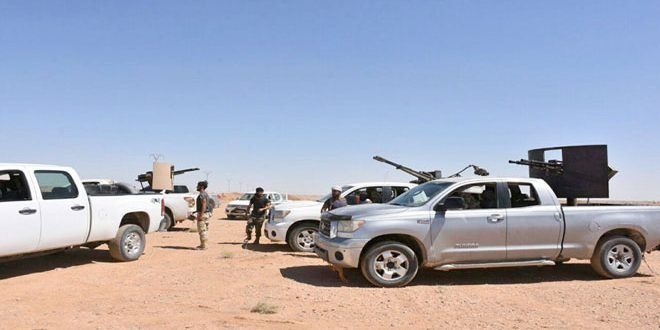
Source



